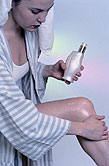
THURSDAY, May 17 (HealthDay News) — A preliminary study links chemicals found in certain sunscreens to a higher risk of endometriosis, but it’s too soon to say whether there’s any reason for women to change their habits.
“This is way too early for prime time,” said Warren Foster, a professor in the department of obstetrics and gynecology at McMaster University, in Hamilton, Ontario, who studies how chemicals affect people.
In endometriosis, tissue that lines the uterus grows outside the womb, leading to pain and infertility in some cases. Foster said the causes of this common condition are fuzzy, and “nothing is proven as far as chemicals are concerned.”
Even if the chemicals do boost the risk of endometriosis, the findings don’t specify how many more women might get the disease. Dermatologists consider sunscreen crucial in the prevention of skin cancer.
Still, the study authors write that their findings should inspire more research into a possible link. Research is especially important because the chemicals in question are found in other products such as moisturizers and lotions, said study co-author Kurunthachalam Kannan, a research scientist with the New York State Department of Health.
“This is something everybody should be concerned about,” Kannan said. “We are going to do more studies and look at many of the cosmetics and personal-care products containing these compounds to see what level people are exposed to every day.”
The chemicals, known as benzophenone-type UV filters, protect the skin from the ultraviolet rays of the sun and also mimic the effects of the female hormone estrogen. Previous research has shown that benzophenone-3, or BP-3, is absorbed into the bloodstream faster than other sunscreen agents, the authors noted.
In the new study, researchers examined urine from 625 women from California and Utah. Those diagnosed with endometriosis were more likely to have the highest levels of the chemical filters in their urine.
The study doesn’t confirm that the chemicals have anything to do with endometriosis, and its design didn’t allow the researchers to determine how much exposure might boost a women’s overall risk of developing endometriosis.
“There is a concern, definitely,” Kannan said. “But at what level of usage we should be worried? We don’t know.”
It’s also not clear if the chemicals could have any negative effects on men.
If the chemicals do have a link to endometriosis, it may relate to their ability to alter estrogen, Kannan said.
Foster, the professor who studies chemical exposure, said endometriosis occurs when there’s too much growth in the cells that line the uterus. Many women have no symptoms, but others develop severe pelvic pain and other problems.
The condition may affect 7 percent to 15 percent of women of reproductive age, Foster said. The cause is unclear, although it may have something to do with genes. He said researchers have explored whether chemicals may play a role in endometriosis by causing it or making it get worse, but “nothing that convincing has really come out.”
If you’re concerned about the chemicals, look for sunscreens and other products that don’t include BP-3.
The study appeared online recently in the journal Environmental Science & Technology.
More information
For more about sunscreen, visit the U.S. National Library of Medicine.

